The Church of the Holy Sepulchre
PeriBlog VII: Jerusalem, Israel
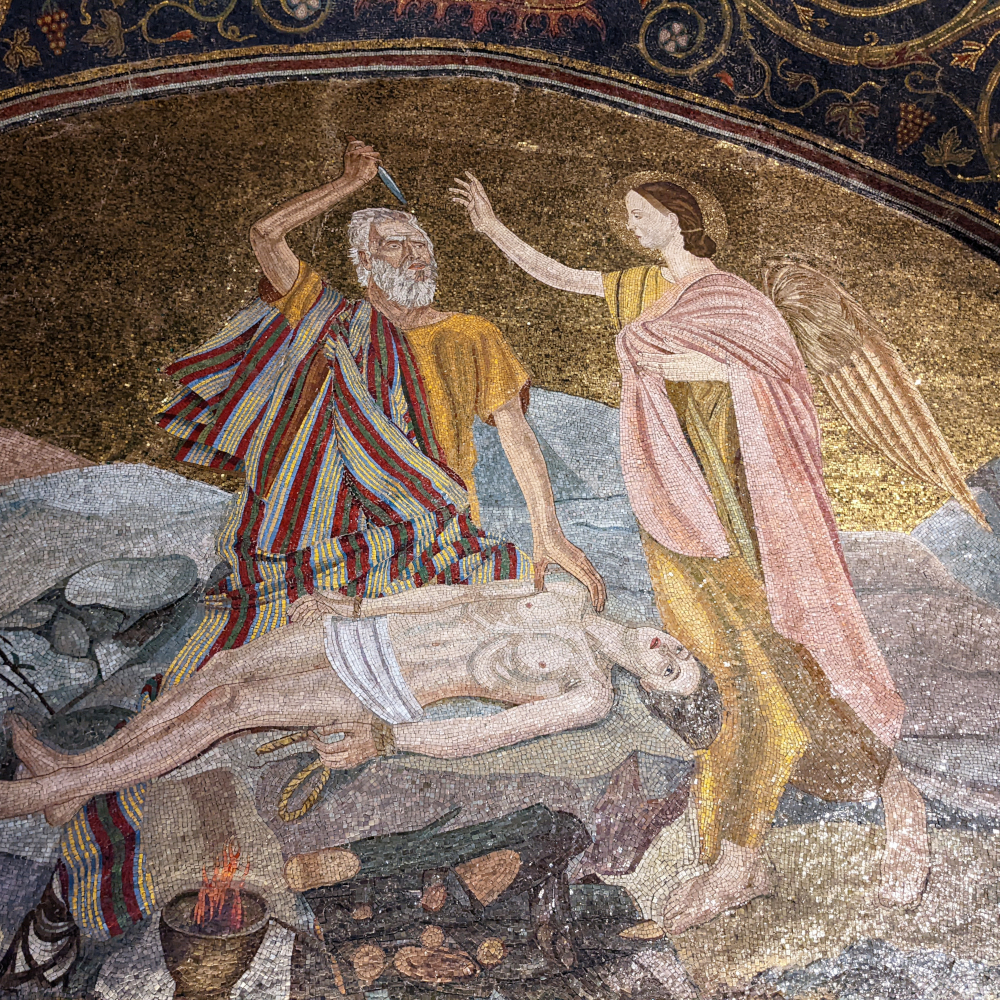
The sacrifice of Isaac, Church of the Holy Sepulchre, Jerusalem
Seven days ago, I was eating oyster burgers and enjoying beach life on the Oregon coast. Today I am in Jerusalem. I will not bore you with an account of our relocation from Oregon to Jerusalem; the tedium, trials, and trauma of international air travel merit no discussion. Let this suffice: three flights and thirty hours of travel separated Oregon and Israel. Let your imagination fill in the details.
Having reached Jerusalem, I fell into an exhausted slumber. Nine hours later the batteries were recharged and I was ready for my first outing. Today's goal was to explore the Old City, the physical and spiritual heart of Jerusalem. Twenty minutes on foot and only a couple of confusing moments about our route, we found ourselves standing outside the stone block wall that surrounds the city.
The Ottoman ruler Suleiman I built these walls in 1537. They encircle the city, a 2.5 mile loop that stands 40 feet tall.
We entered the city through the Damascus Gate. Two observations hit me immediately: the first is that you want to watch your footing. The streets are paved in marble tiles which centuries of pedestrians have worn to a highly polished sheen. This makes them slick, especially if they have been recently sluiced with a hose. A further contributor to stability is the insertion of unexpected steps (both up- and downhill). Those wishing to avoid a nasty tumble are advised to keep a weather eye on the footing.
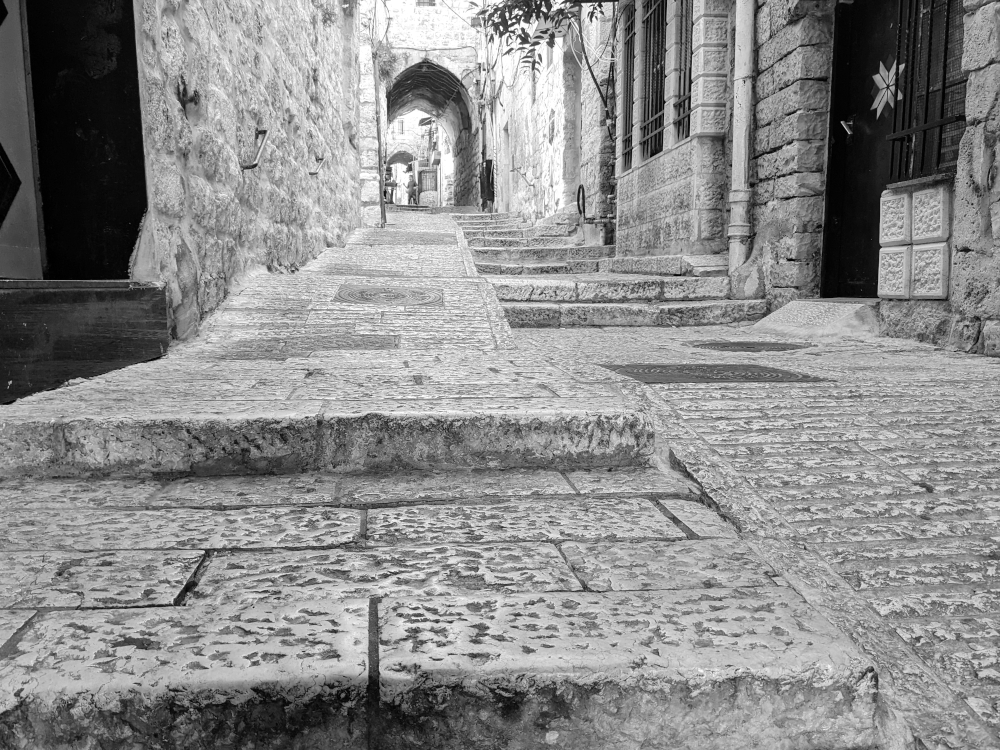
Slippery marble steps
My second observation is that the Old City is actually a giant bazaar that shares the real estate with a few religious sites. Every winding street and alleyway is lined with shops. It is like walking through a medieval shopping mall. One can find the normal tourist tat: carved sandalwood crucifixes, black leather cowboy hats with “Jerusalem” written around the crown in white letters, and twisted coils of ram’s horn—the shofar, a musical instrument blown during Jewish religious celebrations.
Passing beneath the Damascus Gate, we reach the Via Dolorosa (The Way of Suffering). It is believed that Jesus carried his cross along this route as he made his way to Golgotha. The way is marked with the stations of the cross.
One of the most sacred of Christianity’s churches stands at the end of the Via. The Church of the Holy Sepulchre dates to the fourth century. According to tradition, Helena, the mother of Roman Emperor Constantine, made a trip to Jerusalem near the end of her life. Being something of an amateur archaeologist, she discovered the place where Jesus was crucified, the cross that bore his body, and the tomb (sepulchre) where he was interred after his death.
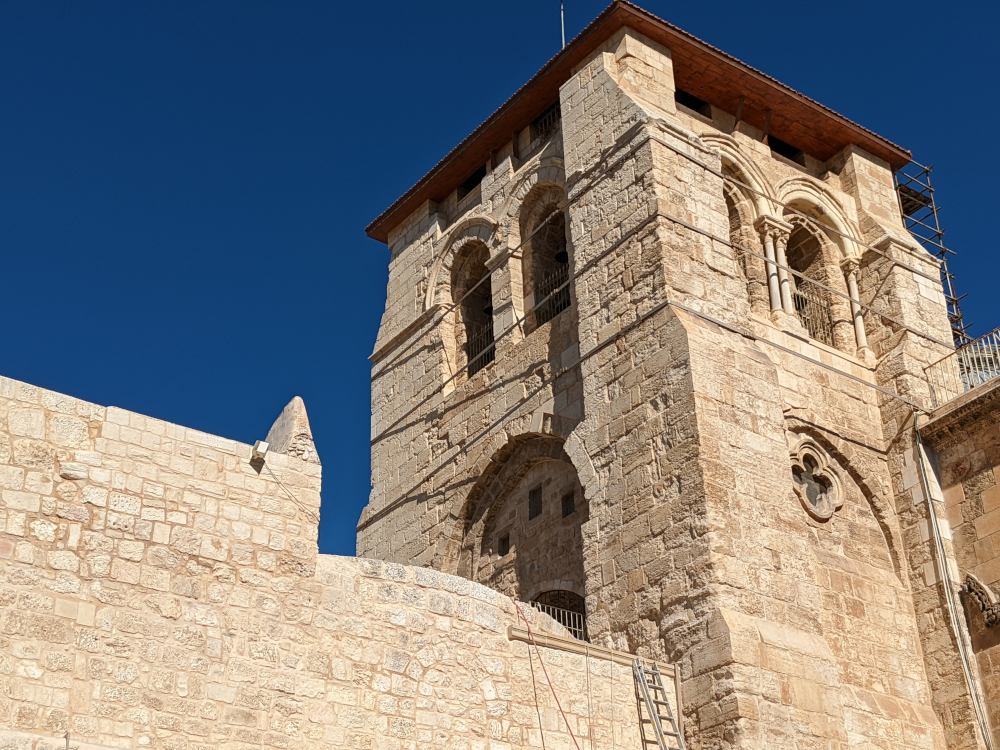
Church of the Holy Sepulchre
Drawing upon her son’s checkbook, Helena built a church that encompassed these three holy sites.
It is important to note that despite Helena’s first rate archaeological fieldwork, many modern archaeologists doubt that the Romans executed Jesus here. Two major objections undercut the proposition. The first is that Romans and Jews did not bury people inside the walls of a city. It is difficult to believe that an exception would have been made for Jesus. His tomb should have been outside of Jerusalem’s walls.
The New Testament raises the second objection. The gospel accounts state that Jesus was led “out,” a phrase that implies a place outside of the city: “Carrying his own cross, he went out to the place of the Skull (which in Aramaic is called ‘Golgotha’)—John 19:17.
Naturally there are other archaeologists who defend the Church of the Sepulchre’s claim. They argue that the city was smaller 2,000 years ago. The church might be built on land that once lay outside an earlier wall. Unfortunately, attempts to locate remnants of an earlier wall have been unsuccessful.
My personal hunch is that this probably wasn’t where Jesus was crucified or interred. On the other hand, there has been a church on this spot since the age of Constantine, and the judgment of those who were much closer to the event deserve the benefit of the doubt.
The church does not make it easy for the visitor. There are no helpful placards or audio tours to explain the significance of the various parts of the building. Many of the inscriptions are in Coptic and Armenian. I can handle Latin and Greek, but the esoteric scripts were impenetrable. I suppose the wise visitor would join a tour group, but since tours give me hives that was not an option.
I chose a different option. We visited the church on the first day, blundered around in some confusion, and took a few pictures. The next morning I spent a couple of hours reading descriptions of the site, and then returned to have a second look.
Such is the luxury of living ten miles from the Old City—I can return at my leisure, many times if the mood strikes me.
The church is best approached in a chronological order. A staircase stands immediately to the right of the church’s main entrance. This is the stairway to Golgotha, the place of the skull. The name is based upon the belief that the skull of humanity’s great ancestor, Adam, is encased in the rock upon which Christ suffered. The Chapel of Adam stands beneath the spot, on the main floor.
The place where the cross (may have) stood is the focus of the small, but ornate chapel. A marble altar crouches over the holy site. On either side of the altar, in two lighted glass cases, visitors can see the stone of Golgotha.
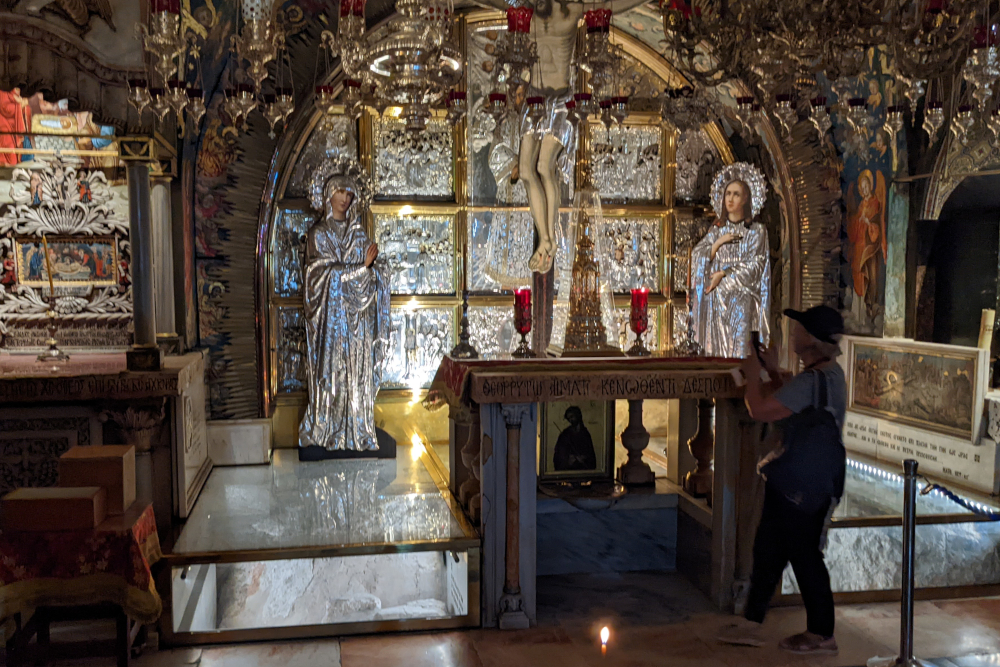
Altar above Golgotha, surrounded by the encased stone
Visitors file past in single file. They kneel, reach down through a hole, and touch the stone that is hidden beneath the altar. Some kiss the ground. When my turn came, I levered myself under the altar, touched the spot, and offered a deferential Anglican head bow.
Dozens of oil lamps flickered overhead, lighting the silver plates that encrust the figures behind the altar. A weary Coptic priest—on hand to police unruly tour groups—nodded in his chair.
A second staircase returns visitors to the main level. Turning left brings one back into the entrance foyer. Here a large marble panel rests on the floor beneath a string of oil lamps. This is the Stone of Anointing.
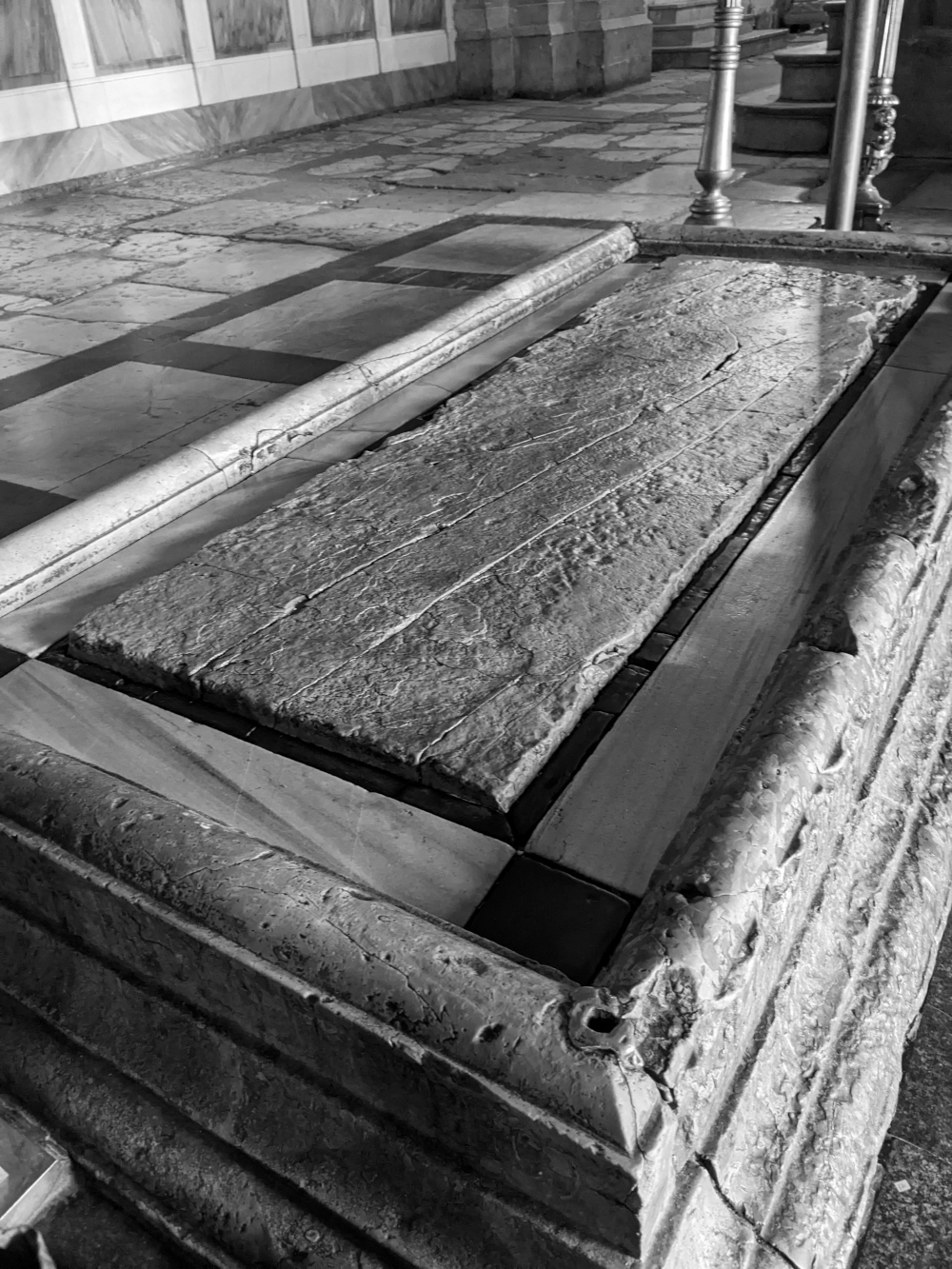
The Stone of Anointing
Tradition asserts that when Jesus was removed from the cross, his body was laid upon this stone. Here his mother and female disciples anointed his body with perfumes and spices before laying it in the tomb.
That scene is depicted in a lovely mosaic built into the wall behind the Stone of Anointing.
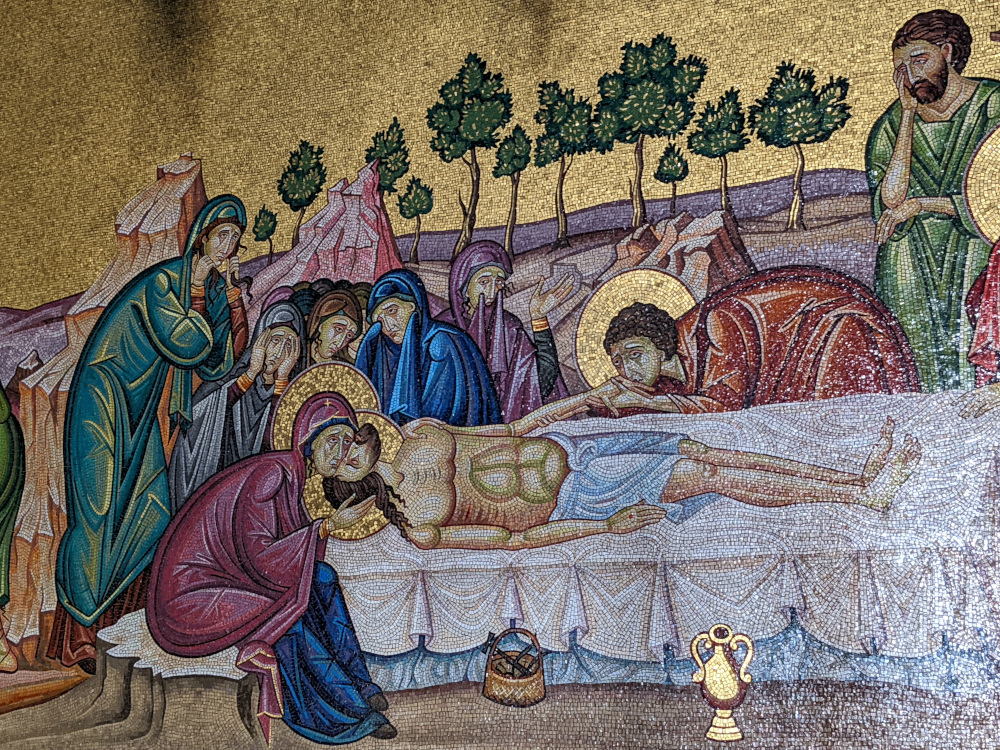
The anointing of Christ
The other main attraction in the church is the Aedicula, a small stone structure built around the Holy Sepulchre. Placed beneath a great dome, the Aedicula is divided into two small rooms.
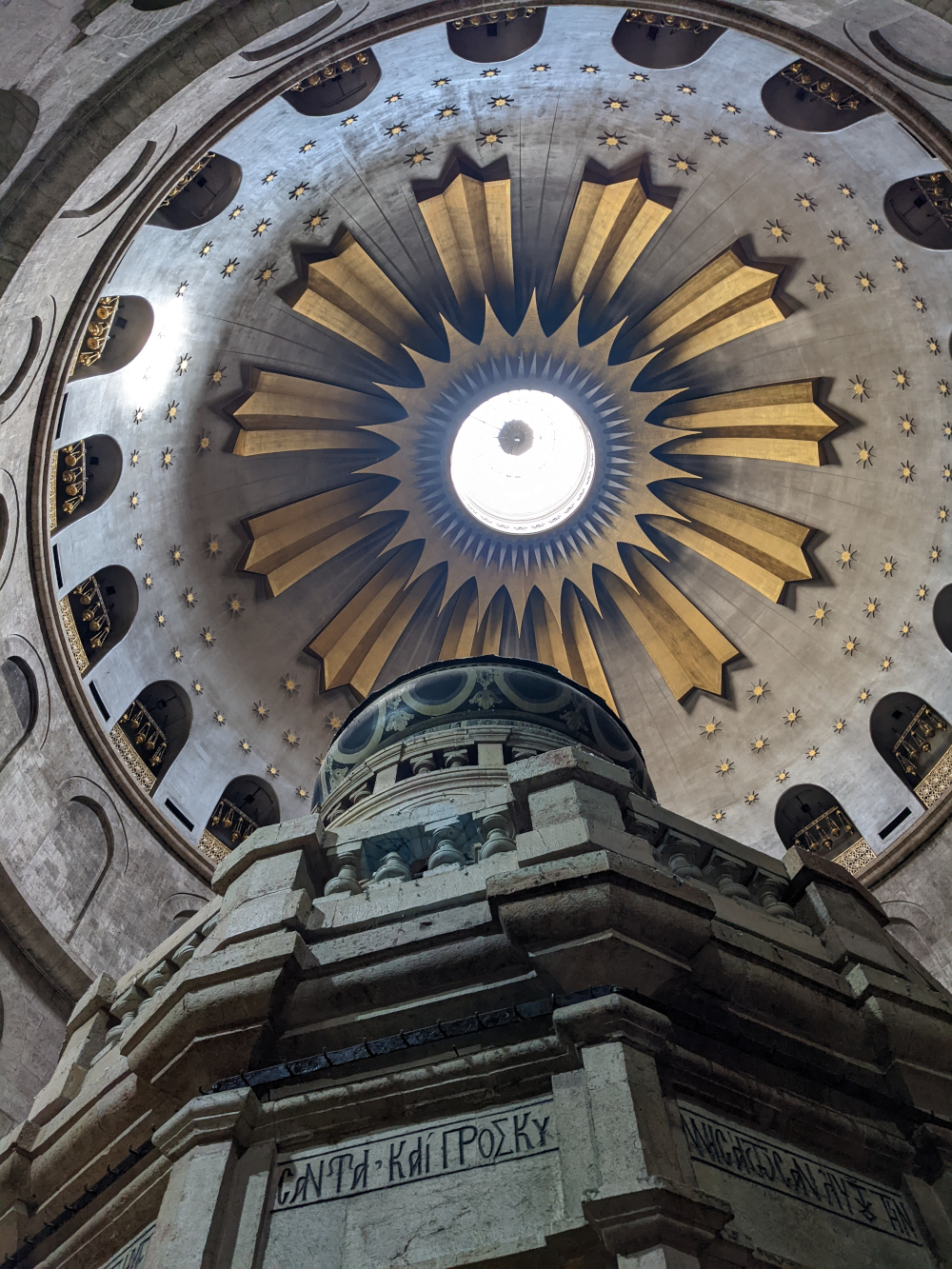
The Aedicula beneath the dome
Oil lamps illuminate the outer room. An Orthodox monk, dressed in a floor sweeping black cassock and a matching black cylindrical hat, regulates traffic. He waves people into the anteroom, four at a time. When our turn came, we entered and stood waiting for the previous group to exit. The monk checked his watch, knocked three times on the stone wall, and ushered them out. We took their place in the inner room and knelt before a marble slab. The actual tomb in concealed beneath the marble barrier, which was installed to stop pilgrims from chipping away small pieces of the sepulchre. A row of tiny gold cherubim flank a small cloth banner embroidered with the Greek words Christe aneste, Christ is risen.
After a minute, the monk knocked on the wall. Time's up. Hunching over, I passed beneath the low marble arch.
Having covered crucifixion, anointing, and interment, it was time to skip ahead 300 years to discovery. I walked back past the Chapel of Adam and descended a set of stairs to a subterranean chapel.
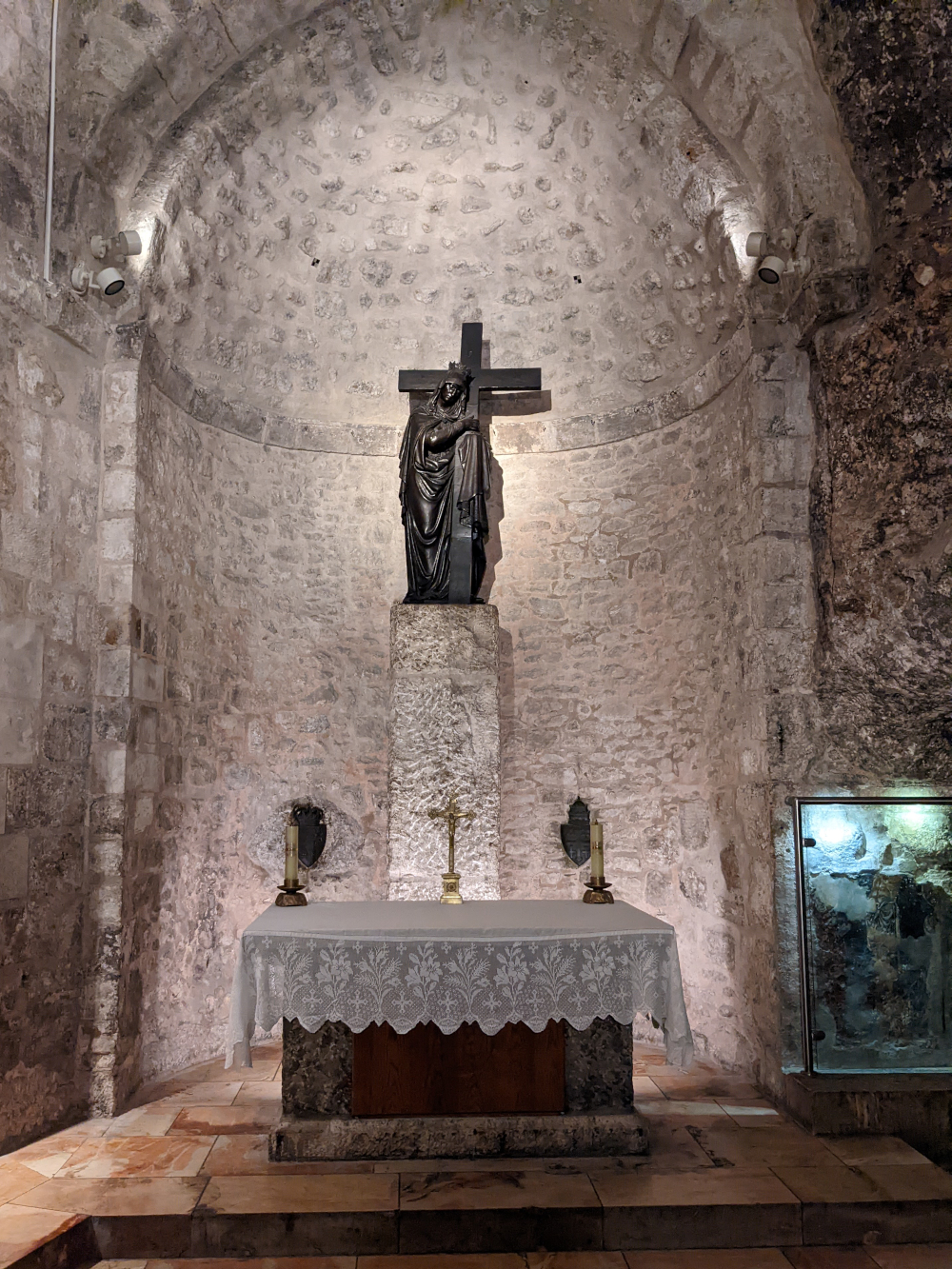
Altar, Chapel of the Invention of the Holy Cross
According to several ancient authors—including Sulpicius Severus—Empress Helena discovered three crosses in this lower chamber. Three was a confirmatory number—Christ was crucified in the company of two criminals. But which cross belonged to him?
Stumped by this mystery, Helena spotted a passing funeral procession and conceived a test. She ordered the corpse lifted out of its cart, and touched to each cross in turn. When the dead man made contact with the One True Cross, its power restored his life. He went on his way. The cross was divided into smaller pieces and sent hither and yon throughout Christendom, with pieces finding their way into the reliquaries of most medieval churches.
In later years, Christianity splintered and divided, just like the One True Cross. Several denominations and sects wrestled for control of Helena's church. After the crusaders seized Jerusalem, Pope Clement VI placed the Franciscan order over the holy land churches. This displeased the Eastern Orthodox branches of the church, and after the Ottoman Empire seized Israel, church leaders often petitioned (or bribed) the sultans to gain control of the sites.
Tired of the incessant bickering, skulduggery, and backstabbing, Sultan Osman III issued a decree in 1757 known as the “status quo.” This decree, which was slightly altered in the centuries that followed, divided the holy sites into administrative zones and assigned them to representatives of six major denominations: Roman Catholic, Armenian, Greek Orthodox, Syriac Orthodox, Coptic, and Ethiopic. I suspect that the status quo even specifies who controls the locks on the front door.
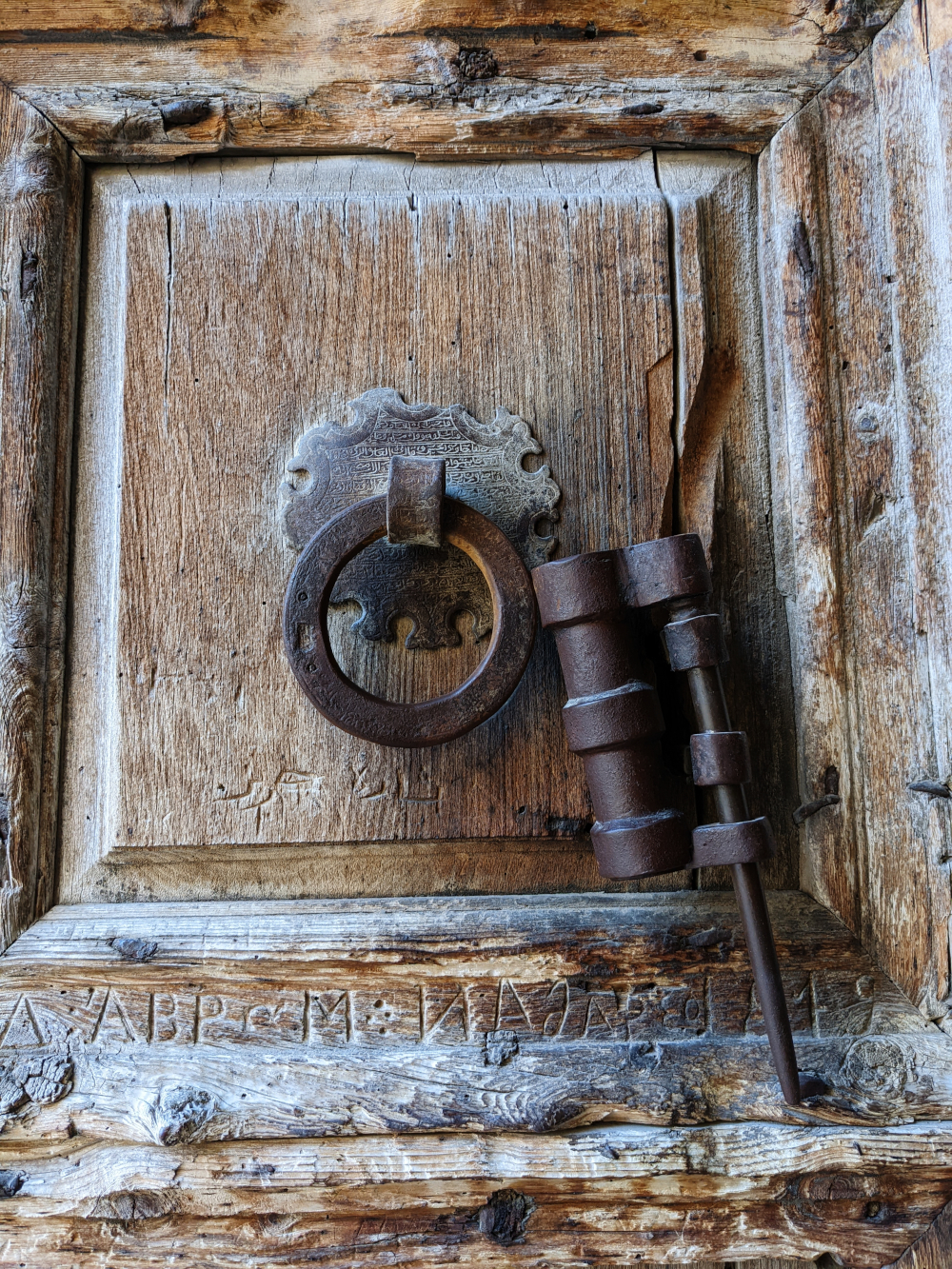
Front door lock, Church of the Holy Sepulchre
Today, areas within the Church of the Holy Sepulchre are overseen and jealously guarded by their respective stakeholders. A disrespect for established boundaries may provoke a violent reprisal. On a hot early summer day in June 2002, a Coptic monk shifted his chair out the summer sun and into the shade. Monks of the Ethiopian church, which controlled that small piece of shaded real estate, took umbrage, viewing it as an attempt at a hostile takeover.
A brawl ensued. The monks began beating each other with iron bars. Eleven monks were injured before the fracas cooled. Clearly the division is working...
Fortunately not all of Jerusalem is fraught with religious controversy. Join me next week for a visit to the peaceful Western (Wailing) Wall
If you are enjoying this series, why not subscribe to Richard's monthly newsletter, What's New in Old News? The Peripatetic Historian is on the road, roaming the world and compiling fresh adventures. Don't miss out. Click here to join the legions of above-average readers who have already subscribed.